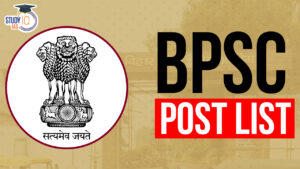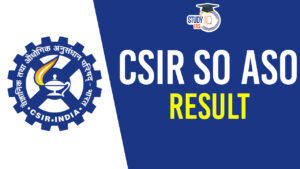Daily Current Affairs for UPSC 2023
Q) Which one of the following commission/committees have been formed by the Union Government for the sub-categorisation of the Other Backward Classes (OBCs)?
- Arun Goel Committee
- Justice G. Rohini Commission
- Justice A.K Mathur Commission
- Justice Ranjana Desai Committee
Daily Current Affairs for UPSC – 14 March 2023
Explanation:
- Option (2) is correct: Recently, The Union government has informed the Lok Sabha that the Justice G. Rohini Commission, which is looking into the sub-categorization of OBCs, has been working without the data from the previous Socio-Economic Caste Census (SECC). Sub-categorization involves dividing the larger OBC group for the purpose of reservation. Currently, 27% reservation is granted to OBCs in jobs and education under the central government. The Justice G. Rohini (retd.) commission was set up under under Article 340 of the Constitution in 2017 by the Ministry of Social Justice to sub-categorise the nearly 3,000 caste groups that are currently listed as OBCs on the Central list.
Q) Consider the following statements:
- The AUKUS Alliance seeks to provide Australia with eight nuclear-powered submarines.
- Currently, only four nations own and operate nuclear-powered submarines.
- A nuclear-powered submarine is powered by a nuclear reactor, but it is not a nuclear weapon.
Which of the statements given above are correct?
- 1 only
- 2 and 3 only
- 1 and 3 only
- 1,2 and 3
Explanation:
- Statement 1 is correct: The AUKUS is a strategic alliance consisting of Australia, the United Kingdom, and the United States. The alliance seeks to provide Australia with eight nuclear-powered submarines (but armed with conventional weapons). The AUKUS will also include cooperation across emerging technologies (applied AI, quantum technologies and undersea capabilities).
- Statement 2 is incorrect: Only six nations own and operate these submarines currently: China, France, India, Russia, the UK and the US.
- Statement 3 is correct: A nuclear-powered submarine, as the name suggests, is powered by a nuclear reactor but it is not a nuclear weapon. Every nuclear-powered submarine draws from its own miniature nuclear reactor onboard, which is typically fuelled with uranium, according to a report in The Conversation. For such a reactor to work, uranium has to be ‘enriched’ to contain 50 per cent of a key isotope, uranium-235. Natural uranium consists of approximately 99.3 per cent of the isotope uranium-238 and only 0.7 per cent of uranium-235. The process of enrichment can be carried out through gaseous diffusion, gas centrifuges or laser isotope separation.
Q) Recently the Manipur government has withdrawn Suspension of Operations (SoO) agreement with Kuki National Army (KNA). With reference to this consider the following statements about the Kuki Tribe:
- In Northeast India, they can be found in all states except Arunachal Pradesh.
- Semang is the annual assembly of a Kuki village community, which makes a major part of their governance.
- Majority of Kukis have embraced Buddhism as their religion.
Which of the statements given above is/are correct?
- 1 and 2 only
- 2 only
- 1 and 3 only
- 2 and 3 only
Explanation:
- Statement 1 is correct: Kukis are an ethnic group native to the Mizo Hills (formerly Lushai), covering parts of Mizoram and Manipur. In Northeast India, they can be found in all states except Arunachal Pradesh. The Chin people of Myanmar and the Mizo people of Mizoram are kindred tribes of the Kukis and are collectively called as Zo people.
- Statement 2 is correct: Their language is closely related to Kuki-Chin linguistic family of Sino-Tibetan race. Mim Kut is the main festival of the Kuki tribe. Semang (cabinet) is the annual assembly of a Kuki village community, which makes a major part of their governance.
- Statement 3 is incorrect: Majority of Kukis have embraced Christianity as their religion. There are many animistic elements in their beliefs.
Q) Consider the following statements about the Lean Manufacturing Competitiveness Scheme (LMCS):
- Under the scheme, MSMEs will implement LEAN manufacturing tools like 5S, Kaizen, KANBAN, and Poka Yoka.
- The National Productivity Council and Quality Council of India have been selected as National Monitoring and Implementing Units (NMIUs) for the scheme.
- Under the scheme, the government will contribute 10% of implementation cost for handholding and consultancy fees.
Which of the statements given above are correct?
- 1 and 2 only
- 2 and 3 only
- 1 and 3 only
- 1, 2 and 3
Explanation:
- Statement 1 is correct: Recently, Ministry of MSMEs launched the MSME Competitive (LMCS) Scheme to provide a roadmap to global competitiveness for the MSMEs of India. The Scheme is basically a business initiative to reduce “waste” in manufacturing. Under the scheme, MSMEs will implement LEAN manufacturing tools like 5S, Kaizen, KANBAN, visual workplace, and Poka Yoka under the able guidance of trained and competent LEAN consultants to attain LEAN levels like basic, intermediate, and advanced.
- Statement 2 is correct: The National Productivity Council and Quality Council of India have been selected as National Monitoring and Implementing Units (NMIUs) for the scheme. The aim of the LEAN is to enhance the quality, productivity, performance, and capability of manufacturers.
- Statement 3 is incorrect: To support MSMEs, the government will contribute 90% of implementation cost for handholding and consultancy fees. There will be an additional contribution of 5% for the MSMEs which are part of SFURTI clusters, owned by women/SC/ST and located in NER.
Q) Consider the following statements about the ‘Vayulink’ platform:
- Vayulink is an ad-hoc data link communication system.
- It has been inducted into the Army under the name Trishul link.
- It uses the Indian Regional Navigation Satellite System (IRNSS) to send radio communication to the base station when the signals are low.
How many of the statement given above are correct?
- None of the statements
- Only one statement
- Only two statements
- All three statements
Explanation:
- Option (4) is correct: Recently, the Indian Air Force (IAF) has developed indigenous ‘Vayulink’ platform for jammer-proof communication with base station.
- Vayulink is an ad-hoc data link communication system, which when installed in an aircraft, gives position of other aircrafts close by, through secure, jammer-proof communication channel.
- It uses the Indian Regional Navigation Satellite System (IRNSS) that is also known as NAVIC, to send radio communication to the base station when the signals are low.
- It prevents aircraft collision, provides better combat teaming and helps plan real-time basis where multiple teams can get together and go towards the target coming from different areas.
- It can have a range of applications and is not confined to one service, but can integrate all combat entities through a single link.
- It has been inducted into the Army under the name Trishul link.


 First IAS Officer of India Satyendranath...
First IAS Officer of India Satyendranath...
 BPSC Post List 2024, Check out Salary Wi...
BPSC Post List 2024, Check out Salary Wi...
 CSIR SO ASO Result 2024 Expected Soon, C...
CSIR SO ASO Result 2024 Expected Soon, C...

















